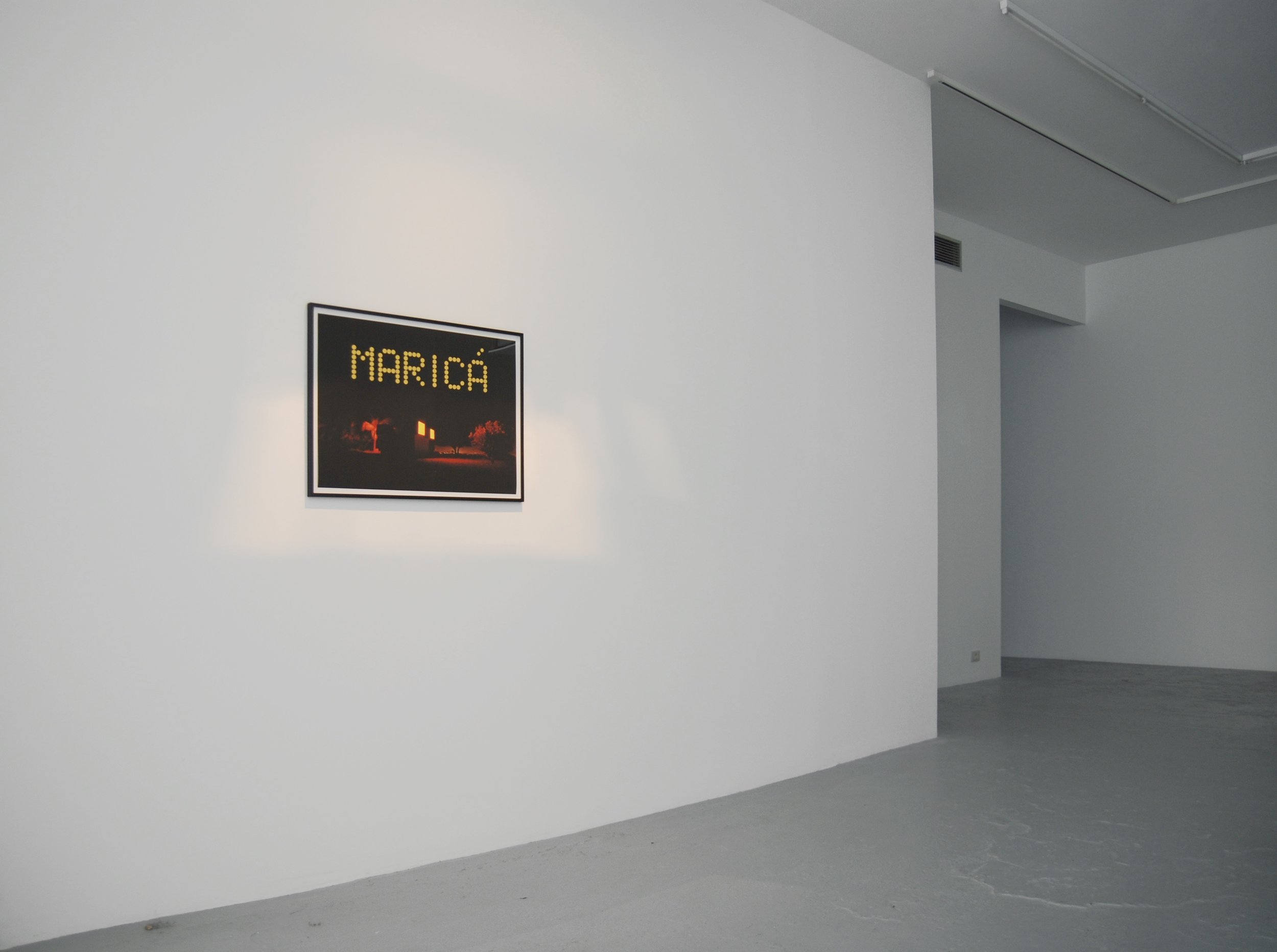Jean-Pascal Flavien: Viewer in Maricá
26 October–22 December 2007, Brussels
Jean-Pascal Flavien, Discussion, 2007, table, cardboard models, speakers, ipod, sound, 105 x 150 x 70 cm, exhibition view, Catherine Bastide, Brussels, 2007
Viewer in Maricá
The exhibition comprises four new works and articulates many interests of the artist such as architecture, science fiction, printed matters whether in the form of books or posters, music in relation to sculpture and architecture.
The piece Sci-fi film, 2007 is a colour, 7 min 28 sec film shown in loop with an original music by American composer Giancarlo Vulcano. This music is saturated the same way the image itself is. The film present the “Viewer” an architecture recently built by Flavien in the near of Rio de Janeiro. This building was first developed in a series of drawings in which it was set in tropical or antediluvian landscapes and desert climates, and at times placed beside dinosaurs. Flavien is less interested by projections of the future or technology than by anachronisms, chronological deviations that all allow him to activate a different temporality in his work.
It is thought as a science-fiction film. There is no human element visible the whole the duration of the film, except for the building itself. Its time, or “époque” could be one of a great past, and at moments, one from a far future. The image is emphasizing on its electronic nature, and on its limits within the camera frame. Shot with a small photo camera, the red colour of the building saturates the images. The house touches the frame, plays with the light adjustments of the camera, the changes and disruptions of colour balance when moving… The sound of the film is written to accentuate these effects, taking the house, and the other elements, sun, landscape, grass, as sources of radiation, creating saturations, revealing the frame. The film is played in loop. It uses a red electronic noise, instead of black between displays. It is projected in an open booth; the sound is asymmetrical, located on the right side of the projection.
The piece « Discussion » is a double model (painted cardboard) of the Viewer. Inside each one a speaker is connected to a two tracks source, playing a specific sound for each model a specific sound. They act like sources of emitted sound, one responding to the other hence the discussion. One sound is low in pitch, the other higher in pitch. The two models are presented on a table, a wood construction like the ones used by vendors on the street of Rio de Janeiro.
The invitation poster also presented in the space is the only thing lighted with a spot. It shows another aspect of science fiction. It features the viewer at night, the scenery sort of reminding “Encounter of a third kind”. Maricá is the name of the place where the viewer has been built.
Jean-Pascal Flavien, Sci-Fi Film, 2007 , single channel film, colour/sound – 7min28
The fourth piece in the show “Micro-films” is presented in a separate room. A series of very short sequences have been shot during the construction of the house in Rio. In most of them the two carpenters involved in the construction become characters of their own. They seem to be linked to the building, but not in the relation to a constructive activity. Their movements and gestures do not seem to participate to the process of building. The two protagonists have also been asked to perform gestures, like walking in circle, go and come back, pass object around… Some animals near the site, snakes, also feature in the film.
For each of the selected micro-films, Giancarlo Vulcano has written some music. The “Micro-films” will be presented in a double projection, one above the other. At times there will be two films playing together, at other times only one and sometime nothing. The music pieces that accompany every micro-film interfere with one another like the sound of several bees.
Exhibition views
About the artist
Jean-Pascal Flavien
Jean-Pascal Flavien was born in France in 1971. He lives and works in Berlin.
Jean-Pascal Flavien’s practice combines elements from architecture, sculpture, and the performative, to create works that are both precise and concrete but also poetic and evocative. The models of houses, for example, are generated from settings imposed by the artist. Like preliminary sketches of large-scale paintings, his models for houses are maquettes for possible scenarios and perhaps views from the past or future of these fictional buildings. His altered domestic objects, such chairs, tables, outlets or blinds draw attention to the way in which design and architecture shape our experience of space but also how they can more fundamentally determine our experience of ourselves and of others.
Represented in Berlin by Esther Shipper.









